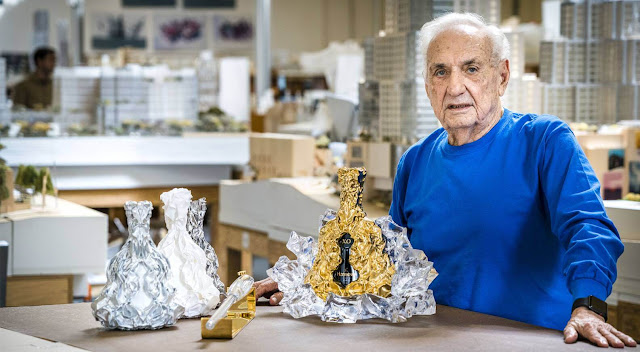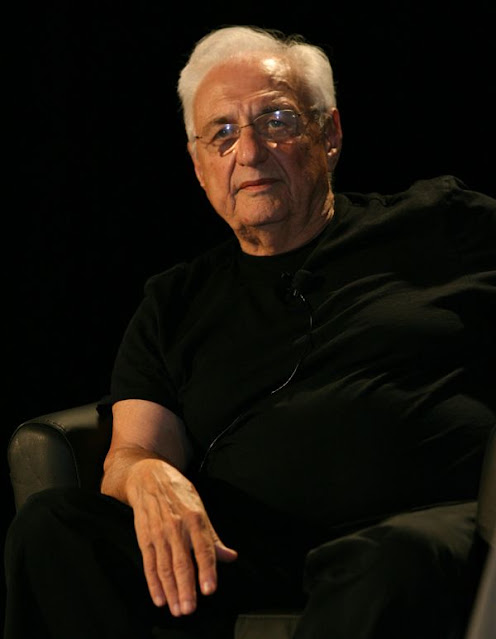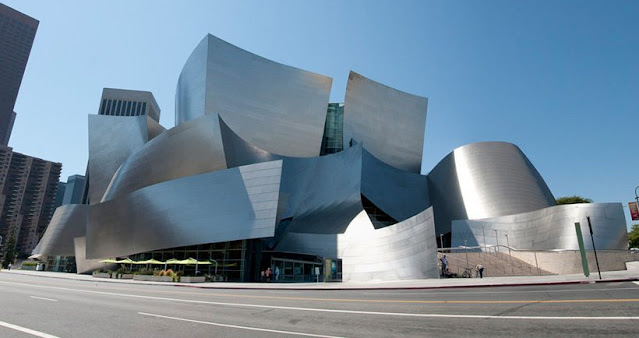Frank Gehry, a name synonymous with groundbreaking architecture, has left an indelible mark on the world’s skyline. His unique approach to design has yielded some of the most iconic structures of the 21st century. From the shimmering curves of the Guggenheim Museum in Bilbao to the sweeping sails of the Walt Disney Concert Hall in Los Angeles, Gehry’s work defies conventional architecture, blending form with function in unprecedented ways. This article delves into the life, philosophy, and contributions of Frank Gehry, exploring how his innovative designs have transformed modern architecture.
Early Life and Education
Frank Owen Gehry was born Ephraim Goldberg on February 28, 1929, in Toronto, Canada. The son of a struggling artist and a furniture maker, Gehry was exposed to creative pursuits from a young age. His family’s move to Los Angeles in 1947 opened new avenues for his artistic expression. Gehry’s educational journey in architecture began at Los Angeles City College before transferring to the University of Southern California, where he graduated with a degree in architecture. Further honing his skills, Gehry studied city planning at the Harvard Graduate School of Design, though he left without completing his degree. These formative years laid the foundation for Gehry’s revolutionary approach to architecture.
Career Beginnings

Gehry’s architectural career kickstarted in the late 1950s, when he designed innovative homes and small commercial buildings in Southern California. His early work was marked by a keen interest in unconventional materials and forms, setting the stage for his later, more radical designs. The renovation of his own house in Santa Monica in the late 1970s, using corrugated metal and chain-link fencing, garnered widespread attention and established Gehry as a force to be reckoned with in the architectural world.
Signature Style
Gehry’s architectural style is characterized by its dynamic, sculptural forms, often incorporating materials that are unconventional in traditional architecture, such as titanium and stainless steel. His designs are not just buildings but monumental sculptures, engaging with their environment in a dialogue of form and space. Gehry’s work is often described as deconstructivist, a movement that strives to disrupt architectural conventions through non-linear processes of design. This approach has allowed Gehry to create some of the most innovative and visually striking buildings in the world.
Notable Projects
Among Gehry’s most celebrated projects is the Guggenheim Museum Bilbao in Spain, a masterpiece of 20th-century architecture that has become synonymous with the city itself. The museum’s undulating form and reflective titanium facade demonstrate Gehry’s ability to merge artistic vision with architectural function. Similarly, the Walt Disney Concert Hall in Los Angeles, with its flowing stainless steel surfaces, stands as a testament to Gehry’s innovative use of materials and forms. Other significant works include the Fondation Louis Vuitton in Paris, the MIT Ray and Maria Stata Center in Cambridge, and the Gehry Tower in Hanover, showcasing the global impact of his visionary designs.
Awards and Recognition
Frank Gehry’s contributions to architecture have been recognized with numerous awards and honors, including the prestigious Pritzker Architecture Prize in 1989, often referred to as the Nobel Prize of architecture. This accolade was awarded to Gehry for his exceptional creativity and for having consistently pushed the boundaries of architecture. His innovative designs have also earned him the National Medal of Arts in the United States and the Order of Canada, reflecting his influence on both the cultural and architectural landscape.
Collaborations and Controversies
Throughout his career, Gehry has collaborated with various artists, engineers, and other architects to bring his ambitious projects to life. His willingness to explore new technologies and materials has sometimes led to controversies, particularly regarding the feasibility and cost of his designs. Despite these challenges, Gehry’s collaborations have often resulted in groundbreaking structures that blend art and architecture in new and exciting ways.
Gehry’s Philosophy
Gehry’s philosophy of architecture emphasizes the emotional experience of space and form. He believes in the power of architecture to inspire, provoke, and move people. His approach is deeply personal, often drawing from his own experiences and artistic sensibilities. Gehry has stated that his work is not about creating icons but about creating spaces that resonate with people on an emotional level. This human-centric approach has made his buildings not just architectural landmarks but beloved community spaces.
Technology in Gehry’s Work
A pioneer in the use of digital technologies in architecture, Gehry has embraced computer-aided design (CAD) software, notably CATIA, to realize his complex designs. This technology allows Gehry and his team to create precise models of his structures, facilitating the construction of forms that were once thought impossible to build. This integration of technology has been crucial in translating Gehry’s visionary designs into reality, showcasing the potential of digital tools in the future of architecture.
Cultural Impact
Frank Gehry’s buildings have transcended the realm of architecture to become cultural icons, influencing not only the field of architecture but also pop culture, art, and design. His work challenges perceptions of what buildings can be, encouraging a broader public dialogue about the role of architecture in society. Gehry’s impact on culture extends beyond his buildings; his creative process and relentless innovation have inspired artists and architects worldwide to push the boundaries of their own disciplines.
Legacy and Future Projects
As Frank Gehry continues to work on new projects around the globe, his legacy as one of the most influential architects of our time is unquestioned. His ongoing projects, such as the Guggenheim Abu Dhabi and the LUMA Foundation in Arles, France, promise to further cement his status as a visionary in the field. Gehry’s legacy lies not just in the buildings he has created but in his approach to architecture—a relentless pursuit of innovation, a deep respect for the emotional impact of space, and a commitment to pushing the boundaries of what is possible.
Personal Life
Gehry’s personal life has been as dynamic and complex as his architectural designs. He has been married twice and is a father and grandfather. His personal experiences, particularly his interest in art and sculpture, have deeply influenced his architectural style. Gehry’s work reflects his belief in the importance of personal expression in architecture, and his buildings are a testament to the creative spirit that has guided his life and career.
Critiques and Challenges
While Frank Gehry’s work has been celebrated worldwide, it has not been without its critics. Some have questioned the practicality and functionality of his designs, while others have criticized the high costs associated with his projects. Gehry has faced these challenges head-on, continually refining his approach to balance aesthetic innovation with practical considerations. His ability to adapt and evolve has ensured that his work remains relevant and respected in the ever-changing landscape of architecture.
Sustainability and Environmental Considerations
In recent years, Gehry has increasingly focused on sustainability and environmental considerations in his projects. Recognizing the impact of construction on the environment, he has incorporated eco-friendly materials and energy-efficient designs into his work. This shift towards sustainability reflects Gehry’s commitment to not only creating visually stunning buildings but also responsible and environmentally conscious structures that contribute to the well-being of their communities.
Frank Gehry’s impact on the field of architecture is immeasurable. Through his innovative designs, use of technology, and philosophical approach to architecture, he has redefined what buildings can be. Gehry’s work challenges us to see architecture not just as functional spaces but as expressions of human creativity and emotion. As we look to the future, Gehry’s legacy serves as a reminder of the power of architecture to inspire, provoke, and transform the world around us.
FAQs
- What is Frank Gehry’s most famous building?
The Guggenheim Museum Bilbao is often considered Gehry’s most famous and groundbreaking project, credited with revitalizing the city of Bilbao, Spain. - How has Frank Gehry influenced modern architecture?
Gehry has influenced modern architecture through his innovative use of materials, technology, and forms, pushing the boundaries of what is possible in architectural design. - What awards has Frank Gehry won?
Frank Gehry has won numerous awards, including the Pritzker Architecture Prize, the National Medal of Arts, and the Order of Canada, among others. - How does Frank Gehry incorporate technology into his designs?
Gehry utilizes advanced computer-aided design (CAD) software, such as CATIA, to create detailed models of his complex designs, allowing for precision and innovation in construction. - What is next for Frank Gehry?
Gehry continues to work on major projects worldwide, including the Guggenheim Abu Dhabi and the LUMA Foundation in Arles, France, showcasing his ongoing commitment to innovation and excellence in architecture.


